
St. Mary’s School 1864-2020
Researched and written by Dr. Daryl Watson for The Galena Foundation
December, 2020
Cover Photo - St. Mary's School in 1964, during better times. It would close only ten years later. State of IL Architectural Survey of Galena - Galena State Historic Sites Office.
Galena's St. Mary's School: 1864-1974
Nothing holds a community together more than its schools and churches. That's been true both historically and still today, when so many small rural communities are struggling with the loss of jobs, services and people. When churches and schools are closely intertwined with their community there is an especially strong bond. Galena is no exception. For much of the 19th and 20th centuries it has had two Catholic parochial schools, St. Michael for the Irish and St. Mary for the Germans. St. Mary's school building, the subject of this report, opened in 1864 and closed in 1974.
Galena's earliest residents, after the Native Americans, were largely native- born southerners. They came from Kentucky and Tennessee and before that Virginia, Maryland, Delaware and the Carolina's. Their religious affiliation was overwhelmingly Protestant with Bible thumping Methodists, Baptists and Presbyterian preachers roaming among their frontier flocks. Catholics on the American frontier were not generally welcome, but over time that changed.
Spiritual and educated men like Father Samuel Mazzuchelli and Bishop Loras of Dubuque, Iowa reached out to those Catholics drawn to the lead mine region for employment, if not a new life. While Father Mazzuchelli is most associated with the Irish, he also ministered to Germans, French and others. He was an anomaly on the frontier: he came from a wealthy family in Italy and had been trained as a priest, missionary, educator and architect. Surprisingly, he was accepted by both Protestants and Catholics on the frontier. He designed numerous Catholic churches in Wisconsin, Illinois and Iowa; he was even hired to superintend the construction of the Jo Daviess County Courthouse, begun in 1839.
As the lead mining economy grew, so too, did the numbers of new settlers, many coming directly from Europe. The Furlong family, for example, came from Ireland in the 1820s and mined lead in what became Vinegar Hill Township. Another Catholic Irishman, John Dowling, started in Galena what became the largest iron works of the Upper Mississippi River region (everything north of St. Louis).
Germans began coming, too (Figure 1). Frederick Stahl, whose German parents had settled in Baltimore a generation before, came to Galena for business opportunities and ended up becoming one of the most influential men in the city (History of Jo Daviess County, 1878, pp. 652-653).
Germany at this time was not united; it was a mix of kingdoms, duchies, city-states and territories. Unification would not come until 1871. A series of revolutions and uprisings calling for more representative governments swept across Europe in the late 1840s. They largely failed and the progressive leaders of those movements and many of their followers were forced to leave their homelands.

Figure 1. 1845 German map of Illinois, published to aid the many Germans coming to Illinois in the 1840s and 50s. Translated title: "Latest map of Illinois with its streets, distances to main points and routes for steamboats 1845." Galena-Jo Daviess County History Museum.
Most came to America, and many of those found their way to the Midwest. Cities like Milwaukee, Chicago, Galena and Dubuque were the beneficiaries. According to one study, 62 percent of the population of Galena in 1850 was foreign born ("Foreign Immigrants in Illinois 1850,"
Illinois History Teacher, Vol. 5:1 (1998), pp. 15-21). It is not surprising then that the desire to establish their own churches and other cultural institutions was strong. These activities provided a sense of community and belonging in a new land.
The Germans tended to be either Lutheran or Roman Catholic. Their neighborhoods reflected this divide. Many think of America as a melting pot, but in fact it was more of a mosaic, with neighborhoods that identified themselves along ethnic or religious lines. Lower Franklin Street in Galena was one such neighborhood. It was German and it was Roman Catholic, and proud of it.
The Early Years
A desire for their own neighborhood church was strong. St. Mary Parish was formally organized in October of 1850 for the specific purpose of caring for German Catholics in and around the city (The History of the Parishes of the Diocese of Rockford, Illinois by The Reverend Cornelius J. Kirkfleet, 1924, p. 187). The traditional narrative is that the Reverend James Van De Velde, second Bishop of the Chicago Archdiocese, travelled to Galena with Father Rodericus Heimerling to meet with Galena's German community and to organize a church.
But prior to this parish records show that an early German missionary baptized thirty-one individuals and witnessed thirteen marriages between December 16, 1849 and July 15, 1850 (Information supplied by Kevin Fuss, Director Research and Planning, Diocese of Rockford).
Travelling from Chicago to Galena overland was not as easy as one might think. Reverend Van De Velde, and Father Rodericus Heimerling were able to ride the Galena and Chicago Union Railroad (begun in 1848) to Elgin, but that was as far as it was completed. They next had to take the stage, most likely the Frink and Walker line, which had timely service but traveled over roads that at times were little more than muddy paths filled with potholes.
Still, the two German travelers persevered, periodically stopping along the way to visit and minister to German settlements (Celebrating 150 Years, St. Mary Parish 1850-2000: A Glimpse into History).
It should be noted that Stephenson County had been attracting large numbers of German farmers by this time, most from southeast Pennsylvania (Makingthe Heartland Quilt: A Geographical History of Settlement and Migration in Early-Nineteenth-Century Illinois by Douglas K. Meyer, Southern Illinois University Press, 2000, p. 237). They were coming not for lead but for land. Stephenson County and parts of Jo Daviess County had excellent land for settlement and it was quickly being swallowed up by those who had enough currency to buy it. In addition to having more funds than many, the Germans were also noted for having the finest farms in the neighborhood.
But they were also known for their skilled trades, and for them Galena was the place to be in 1850. Germans were well represented, both Protestant (mostly Lutheran) and Catholic.
Bishop Vandevelde and Reverend Heimeling arrived in Galena safely and found a beehive of activity, second only to Chicago. They immediately set about organizing the faithful, this in September and October of 1850. A committee was formed to find a suitable lot in the City upon which to build a church (History of the Parishes of the Diocese of Rockford, Illinois, p. 296). They found a suitable location at the corner of Franklin and High Streets, which was purchased in 1851 from Martin and Catherine Gray (Book of Deeds M, p. 618). Not surprisingly, the location was in the heart of a heavily German Catholic neighborhood (Figure 2). Reverend Heimeling was immediately named pastor of the new parish.

Figure 2. St. Mary's Catholic Church - Located at the Franklin and High Streets intersection, the church has been a constant anchor for the neighborhood and beyond. Alfred W. Mueller Collection - Galena State Historic Sites Office.
Funds were initially very limited, and most came by way of subscriptions, so a new building would have to wait. Instead, they acquired an old but sturdy wood frame building that had started out as a Baptist Church, only to be purchased and moved by the largely Irish St. Michael Parish (established in 1832) for their school (Figure 3). The "new" German church was moved, remodeled, and served the community for six more years. But its life was not over; it was sold and moved to the east side of Franklin Street. After serving three churches it went on to serve as a saloon, barber shop, blacksmith and wagon shop, and paint shop (St. Mary Parish pamphlet in the files of the Galena-Jo Daviess County History Museum).
The parish's second pastor was Father Bernard Herderer, from 1856 to 1861. He ministered widely, visiting Hazel Green, Pilot Knob, the townships of Rush, Elizabeth, Hanover, Guilford, Plum River, Vinegar Hill, and a place called Spruce Creek. But the center of all these activities remained Galena.
Father Herderer stepped down in 1861 and was replaced by Father Peter Fischer, who immediately oversaw the construction of the present brick church, less the steeple which they could not afford. The plans were drawn by none other than Father Samuel Mazzuchelli. The cost of construction was over $8,000 for a 40 by 80 feet building, a substantial amount for the
time, given the fact that the Civil War was underway when the construction was completed in 1862 (Figure 4). Mazzuchelli also donated a marble alter which later served as a side alter (Information supplied by Kevin Fuss, Director Research and Planning, Diocese of Rockford).

Figure 3. St. Mary's Catholic Church, circa 1880. Looking west from Franklin. The steeple was added in 1875-1876. The cupola in the upper left identifies St. Mary’s School. Alfred W. Mueller Collection, Galena State Historic Sites Office.
The next pastor was Father William Bally, whose service to the St. Mary parish lasted 52 years, from 1862 to 1914 (Figure 5). Due to his longevity and energy, much was accomplished, including the St. Mary school building, which he made a priority as soon as the church building was finished (Figure 6).

Figure 4. Father William Bally with First Communicants. c. 1880. He served the parish for 52 years, longer than any other. Parishes of the Diocese of Rockford, p. 193.

Figure 5. St. Mary's School today showing original section, exhibiting vernacular construction with little ornamentation. A single large cupola originally adorned the roof. Photo taken 14 September 2020.
It was to be built on the hill behind the church at the intersection of Hill and Elk Streets. Despite a Civil War raging--resulting in a shortage of men and materials--work began in 1864 with final touches being applied in 1865.
The building used the characteristic orange-brown Galena brick with the traditional construction techniques of the time. Nothing was fancy, but it was solid. All the openings had stone sills.
The roof was supported by heavy wooden beams with mortise and tenon joints. Cast iron straps and rods were used for added strength of the roof truss system (Figure 7). It's the kind of construction one can find in many of the downtown buildings built during this period. Many barns in the area used similar truss designs. It was topped off with a single large cupola; whether it ever housed a school bell is uncertain.

Figure 6. St. Mary's School showing roof truss system of 1864 section. Many downtown commercial buildings used this or similar construction, including area barns. Photo taken 14 September 2020.
The first teacher was Professor John Tashaller (St. Mary's Church file, housed in the Galena Public Library, Historical Collections Room). Due to the fact that funds were limited, there was only one full time teacher. In addition to teaching, his duties also included playing the organ and directing the choir. Fortunately, he had volunteers from the parish who helped.
A major change came in 1866 when Father Bally and the parish worked out an arrangement to bring several School Sisters of Notre Dame in Milwaukee to take over all teaching duties. They were an order dedicated to teaching and are still active today. It was a wise decision; when the Sisters took over the school attendance improved dramatically. During the 1869 school year they had 220 students enrolled (The Galena Gazette, article written by Jan Smith, 9 May 2007).
The Sisters were in charge from 1866 until the school closed, with the exception of six years (1903-1909) when the Franciscan Sisters had charge and for two more years when the students attended the public schools (The Galena Gazette, 9 May 2007). It's uncertain why the School Sisters of Notre Dame were absent for those years, but considerable improvements were made to their living quarters to better accommodate (and perhaps to entice) their return.
It should be mentioned that Father Bally had spearheaded the acquisition of eight acres for a cemetery on the south side of town. But he didn't stop there; an addition to the church in 1867 served as a sanctuary (1878 Jo Daviess County History, p. 506). It measured 32 by 65 feet. The cost was
$20,000 and paid for by subscriptions. (Federal Writer's Project, 1937, p. 60).
With funds received from the estate of Leopold de Massuir, a wealthy and eccentric parishioner who had once fought for Napoleon, the priest oversaw the construction of the elegant steeple that still graces the front of the church today (Figure 8). This was in 1875-76 (The Observer, Edition of Our Sunday Visitor, 7 June 1951). Funds from the Massuir estate also paid for a new rectory, constructed in 1876. Massuir, while still living, commissioned a large painting of the "Assumption of the Virgin Mary," for a new high alter. The painting was done in Switzerland by artist D. Annen, the cost of which was said to be $600 in gold. Massuir had no family and left most of his wealth to St. Mary's after a falling out with the priest at St. Michael's where he had earlier been a member. (https://www.findagrave.com/memorial/115486714/leopold-demassuir, retrieved 5
December 2020).

Figure 7. St. Mary's Catholic Church with its huge ornate steeple. The sanctuary is on back of the church with the school behind that (note cupola on school). Shreiner's Hall, a German community hall, is across Hill St. to the left and to the right of the church is the rectory. Alfred W. Mueller Collection - Galena State Historic Sites Office.
During this time, the St. Mary school attracted many German Catholic families from the countryside who wanted their children trained in a parochial school. One such family was that of Mr. and Mrs. Joseph Wand of Derinda, "who were in the city today and placed their daughter at school in St. Mary's school" (Galena Daily Gazette, 19 Sept. 1895). Needless to say, Derinda township, being in the south central part of the county, was a long distance from Galena, particularly in horse and buggy days. But it was not uncommon for parents to make arrangements for their child to stay with relatives in town during the week, returning home for the weekend.
St. Mary's school by this time was very much a part of the larger Galena community. A newspaper article noted the importance of their school children in the Fourth of July celebration parade for 1889:
The procession formed on the Market Square, under the direction of the Chief Marshal, Joseph H. Barry. The Dubuque band was at the head, and was immediately followed by the children of St. Mary's school, who were strong in numbers and made a nice appearance.
Following them was Company I...the Hanover Band, Liberty Fire Company and carriages containing the officers of the day and the Mayor and city council. (Galena Daily Gazette - 5 July 1889.)
The involvement of the children (and their parents) remained strong right into the 20th century (Figures 9 and 10).

Figure 8. St. Mary's School Class on Washington's Birthday - 22 February 1909. Photo courtesy of Craig Albaugh.

Figure 9. St. Mary's School students in one of their classrooms - circa 1915. Photo courtesy of Craig Albaugh.
Back Row:
Miss Callahan
Veronica (Bailey) Jahncke (1898-1972) Evelyn (Bussan) Connolly (1901-1993)
Front Row:
Frances Wubben (1900-1997)
Anna (Miller) Allendorf (1900-1963) Louise (Rieter) Kuhlman (1902-1990) Leona Geiger (1898-1920)
Martha Kerg
Bertha Geiger (1902-1997)
Christina (Foht) McDermott (1901-1973)
Continued Progress in the 20th Century
Father Bally died in 1914 and was replaced by Father John Nilles, who served for 26 years (Figure 11). He continued to make significant improvements to the St. Mary parish properties, very much in the tradition of his predecessor. Under his leadership, the cemetery was enlarged and beautified (at a cost of $9,000), the rectory was rebuilt and remodeled (much as we see it today--at a cost of $20,000), the sanctuary was added onto ("as a gallery for the children"), the church floor was raised two and one-half feet, and in the process the church was newly decorated and furnished (The Observer (17 June 1951).
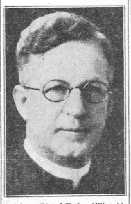
Figure 10. Rev. J. K. Nilles -The Observer - 1 February 1940, Page 6.
But most important of all, for this report, he supervised the construction of a major addition to the school building in 1917 (Figure 12):
Parochial School Grows
Rev. Father J. K. Nilles, pastor of St. Mary's Catholic church on Franklin street, is certainly an interested worker for the welfare of
the parochial school of his parish. He has improved the school system in every way he possibly could, and now there is an attendance to this reverend gentleman's credit of 127 pupils. In fact, the number of new scholars has grown so rapidly that it was necessary for the sisters to give up several rooms of their home in order to accommodate the scholars. Rev. Fr. Nilles has been figuring a way to obtain more school room, and has had Mr. Clarence Hatzfeld, an architect of Chicago, draw the plans for an addition to the old school building that will be fully as large as the present structure...
The addition will be built on the north wing and will consist of two full rooms and a basement. The new part will be modern, light and airy with a large roomy entrance, and corridor running through the entire building. The sisters will, after the improvements are completed, occupy the entire south side of the old school building. Wardrobes and toilets will be an added feature in the addition to be built... (Galena Weekly Gazette, 11 January 1917).
Work proceeded rapidly and in December the Gazette could report that the new school would be open following the Christmas holidays:
New Parochial School
...this will be the finest school building in the city for it is up to the minute in every respect. It is two stories high, 47x43 feet dimensions, finished exteriorially [sic] with burnt brick, with a massive Gothic entrance of Bedford stone and on the interior the finish is of hard pine wood work with hard finished walls. There is contained in the new wing, two large class rooms, 4 wardrobes, with a large spacious basement containing the toilets and play rooms. The entire school will be heated with a new plant and the electric wiring is all in conduits. The floors are sound proof, there being a layer of cinders and cement between the ceiling and the second floor. The Gravity ventilating system has been installed which is advocated by the state and the rooms are well lighted, special attention being paid to the arrangement of the light from windows. The old building has been so thoroughly remodeled that not a trace of the old fashioned school is noticeable, so that now the school as a whole is strictly fire proof.
The cost will run in the neighborhood of $24,000.
The Sisters' quarters have also been remodeled, new bath rooms installed and everything possible done to make their home a most comfortable one (Galena Daily Gazette (15 December 1917).
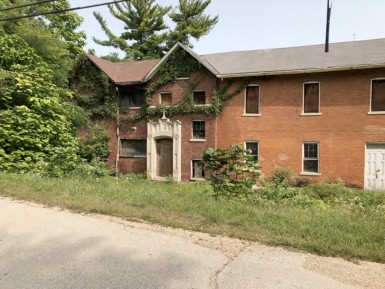
Figure 11. St. Mary's School today, showing the 1917 addition on the left, now almost obscured by rank vegetation. Photo taken 14 September 2020.
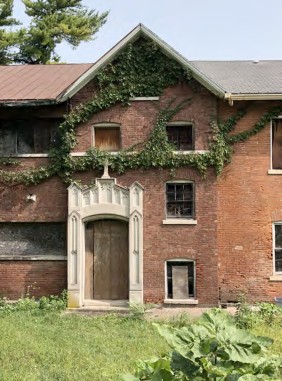
Figure 12. 1917 addition with its "Gothic entrance of Bedford stone" as seen today (14 September 2020).
It should be noted that the Rockford Diocese paper, The Observer (17 June 1951, p. 12) put the total cost of the new school addition at $32,000 (Figure 13).
Fundraisers for the school were a common theme. The students were always involved. On October 12 of 1927 the Children's Fund "received a profit of
$57.30 from a Patriotic program given in the church basement" (The Galena Gazette, 9 May 2007). The same article also noted that their Christmas program the same year netted $150.25 for the same cause. And in April of 1939, their class play, Tom Sawyer, was held in Turner Hall for the entire community to enjoy. Their performances appear to have enjoyed great success.
Rev. Nilles retired in 1940 due to ill health, but on reflecting on his years of service, the Rockford Diocese Observer noted that: "Foremost in his thoughts always was the parish school" (The Observer, 1 February 1940) . He was interested in their entire well-being: their studies, health, and recreational activities, in addition to their spiritual training and instruction (Figure 14).
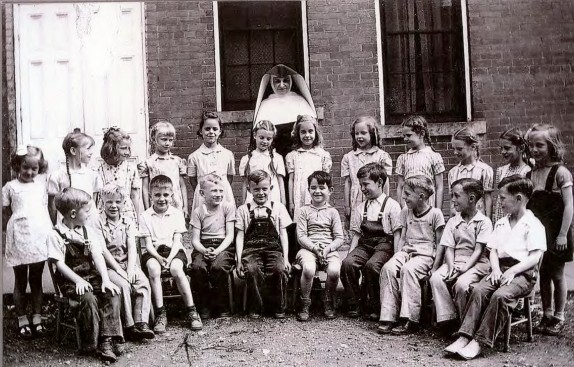
Figure 13. St. Mary's first and second grade class in 1934 (Photo courtesy of Craig Albaugh).
Father Raymond Horner took over in 1940 and served for the next ten years. Graduation exercises for June of 1941 noted the following:
The Rev. R. A. Horner, pastor; instructors, 4 School Sisters of Notre Dame; date of graduation, June 1: number of graduates, 18 (7 boys and 11 girls)...awards: Anna Callahan, highest average; outstanding member of school patrol...Richard Foechking; winners history contest...Doris Oldenberg, grade 8, and Janet Jackonisky, grade 5.
Names of graduates: Anna Callahan, Marie Berning, Doris Oldenberg, Mary Schnerre, Lorraine Mang, Ruth Bussan, Viola Cogan, Rosemary Bauer, Meida Glasker, Rene Marsden, Velma Ehrler, Richard Foecking, Edward Miller, James Knoebber, Gerald Westmeier, Clifford Serth, John Allendorf, and Joseph Stoffregen. (The Observer, 1 June 1941.)
The World War II years were a time of austerity, but everyone made the best of it. A Navy Day Program was held at Turner Hall in 1944 and all Galena school children were asked to take part. A Gazette article in 2007 by Jan Smith gave the details:
The upper grades sang a patriotic song, the lower grades played a selection from the Rhythm Band. St. Mary's had the only rhythm band in the city, and even before they would begin to perform the audience would show their support and cheer. In this particular event the pastor received a letter from W. S. Hatch, Lt. Commander, U.
S.N.R. Chicago, stating his 'appreciation of your valuable assistance in making a success of the Galena Navy Day Program' and thanking them 'for the splendid cooperation demonstrated by such patriotic leaders of the community as you.' The school children [in all the Galena schools] were asked to make pledges to help in the Fourth War Loan. Only the children in grades one through eight took part. The high schools did not. The grade schools at that time had an enrollment of : Central, 320; St. Michael's, 88; St. Mary's 110. The highest in total sales was St. Mary's with $31,600. (The Galena Gazette, 9 May 2007.)
It's uncertain what they were selling, or if that number was for St. Mary's or for all the Galena schools, but clearly it was successful!
In 1946 a new principal was announced in the Galena Advertiser:
St. Mary's Has New Principal
Sr. M. Theafaia is the new Notre Dame instructor for the 7th and 8th grades...She will also be organist...Sr. M. Mynetta, 5th and 6th grade teacher will also be principal....Other instructors will be Sr. M. Benvenuta, 1st and 2nd grades, and Sr. M. Sheila, 3rd and 4th grades...Their has been an increase in enrollment...a number of new desks have to be added in the first room...This school also has undergone a thorough cleaning for organization (Galena Advertiser, 29 August 1946).
The article reinforced the cleanliness idea by concluding with the notice that "all Galena school buildings have been sprayed with DDT."
A massive renovation program began in 1950 after Father Paul A. Tuchinsky was appointed in April of that year. It was the parish's 100th centennial and everyone was determined to make it special. Father Tuchinsky supervised the expenditure of $50,000 on the church and another
$48,000 on the school and convent (That All May Be One: A History of the Rockford Diocese by Rev. Robert R. Miller (The Diocese of Rockford, 1976), p. 198).
Extensive work was done to both the interior and exteriors of both the church and school. There were also upgrades to the heating systems, which had never been entirely adequate. They even made improvements to the old St. Joseph's Meeting Hall on the east side of Franklin [now a parking lot], turning it into a recreation center for parish youth. The upstairs was turned into a gymnasium while the downstairs space was fitted up with ping-pong tables, shuffleboard, dance floor and kitchen (The Observer, 17 June 1951,
p. 12). As St. Mary's school enrollment increased, the St. Joseph building would also provide an extra classroom or two (Figure 15).
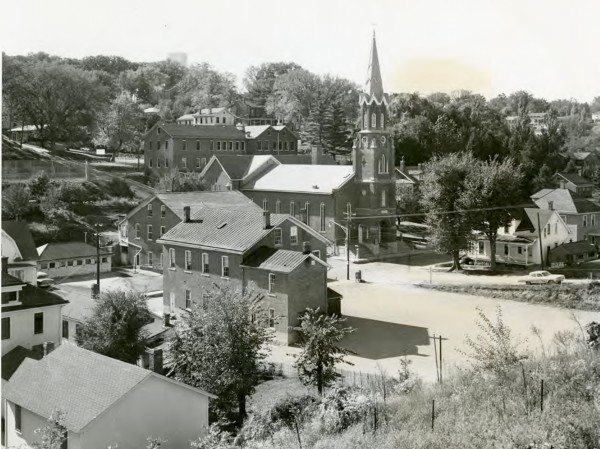
Figure 14. St. Mary's School in background and St. Joseph's Hall in foreground, 1964. State architectural survey, Galena State Historic Sites Office.
Celebrations marking the Centennial of the St. Mary parish were originally scheduled to take place in 1950. Preparations had started late due to the long illness of the previous pastor. As a result the celebrations were postponed for one year. But the Sisters, looking forward to improvements in their heating system, were patient, and in September of 1952 they were rewarded when heat from a new oil furnace brought much-needed warmth to their bedrooms (The Galena Gazette, 9 May 2007.)
Enrollment numbers for St. Mary's school increased following World War
II. They had traditionally been in the range of 150-200 up until the war. But a few years after, the numbers climbed: 202 in 1952; 235 in 1953; and 287 in 1958. But there was a drop in 1968 when a $4.00 per family "donation" was instituted for the Sunday collection, which was quite modest considering the parish charged no tuition for students (The Galena Gazette, 9 May 2007). For many years they would have one teacher for two grades,
but when grades were larger than normal, one or two more teachers were added. Sisters would make up the majority of teachers each school year, but one or two lay teachers were often hired to bring the school up to full strength.
Thirteen boys and girls received their graduation diplomas at the end of the school year in 1953:
Outstanding student among the boys, James Bussan, will receive the American Legion medal; Jean Harris, was the outstanding girl in the class. James Nack and Kenneth Neuwohner will receive medals for faithful altar boy service; Henrietta Dillon, Kay Harle, Norma Jean Hasken and Mary Bussan, for Junior Choir service. The graduates are: James Bussan, James Nack, Kenneth Neuwohner, Darlene Berlage, Mary Bussan, Henrietta Dillon, Kay Harle, Jean Harris, Norma Jean Hasken, Mary Kennedy, Joan Miller, Arlenne Van de Drink and Norma Harney. (The Observer, 31 May 1953).
With the start of the school year in 1958, the teachers were:
Sister Carola, grade seven and eight, Sister Grace, six and seventh, Mrs. Anna Cox, fifth and sixth, Mrs. Stella Timpe, fourth grade, Sister Lipharda, third grade, Sister Ronald, second grade, and Sister Yvonne, first grade. Sister Juvanta, the cook. (The Galena Gazette, 9 May 2007.)
It should be noted that a few years earlier, in 1953, a parked truck broke loose on Hill Street and rolled down the hill and onto the playground, just short of the first grade classroom and only 30 minutes after children had been playing there. (This type of thing and near impossible winter driving on this part of Hill Street would lead to its permanent closing between Elk and Franklin.) In 1955 a new playground for the girls was dug into the hillside adjacent to Elk Street (The Galena Gazette, 9 May 2007). (Figure 16).
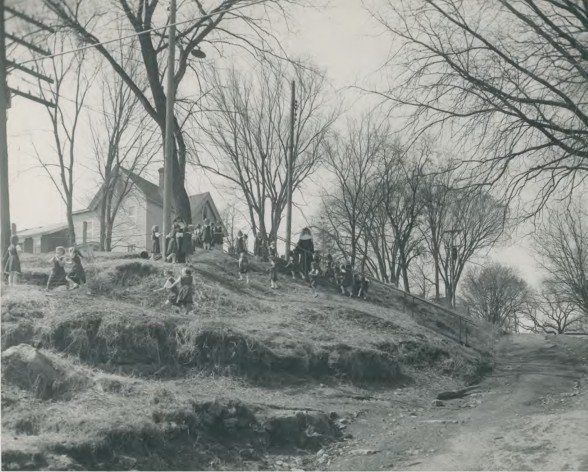
Figure 15. Girls Elk and High Street Playground - circa 1960s. Note the girl's uniforms; the school instituted a policy that all students wear uniforms in 1960. Photo courtesy of School Sisters of Notre Dame Archives.
The school building received regular maintenance during the 1960s, but student enrollment began to drop and no major renovations or upgrades were made. The enrollment in 1964 peaked at 320, but had dropped to only 137 when it was forced to close ten years later. St. Michael's school closed in 1968 (Galena Gazette clipping in the files of the Galena Public Library, Historical Collections Room, dated only June, 1974). Ironically, it was in 1966 that the Sisters of Notre Dame celebrated their 100th anniversary of their arrival in Galena. They would leave, never to return, in 1973. The next year--the last year the school was open--only lay teachers were present.
The decision to close was not an easy one. Walter Middendorf, chairman of St. Mary's board of education, reported a vote of 4 to 1 in favor of closing the school (Galena Gazette, 31 January 1974). He said their state of finances left them no other option. Rev. Father Morrissey concurred, noting
that no action was being taken as to the future use of the building, which was in need of repair and maintenance. The biggest adjustment was for the public school system, which had to find additional space for the extra students, and 4-5 new teachers.
Despite the finances, many of St. Mary's parishioners were not happy. Timothy Malone wrote a poignant piece for the Gazette on the importance of St. Mary's school to the social fabric of the community. "A community tradition is dead," he began, and then continued:
There is an importance to placing the demise...into focus in terms of the Galena community. In a small town human institutions are uniquely visible. These institutions (families, churches, schools, social clubs) are necessary arbiters of the cultural environment in which individuals develop and out of which history grows. The influence the various institutions exercise is subtle, complex, and never completely understood. In a very real sense the total effect the closing of St. Mary's Grade School will have upon Galena is unknown. This fact coupled with the obvious fact that Galena and many Galenians could not be what they are without St. Mary's Grade School makes it more than proper to pay tribute to this 110 year-old institution when events force its closure....
Hopefully, however, the people of Galena will remember their debt to these extinct institutions, and pause every now and then to give a brief mental 'tip of the hat' to St. Mary's Grade School." (Gazette clipping dated only June, 1974 in the St. Mary's Catholic Church file in the Historical Collections Room of the Galena Public Library.)
There are literally hundreds of graduates of St. Mary's grade school who have left their mark on Galena and wherever else they have gone. Several recent names prominent in community affairs are those of Terry Renner, Chuck Korte and Rick Weis. They and so many others fondly remember their years at the school. Terry, a graduate of 1963, remembers the school as having about 200 students (Figure 17). They had a lot of area farmers with big families, which helped enrollment, he said.
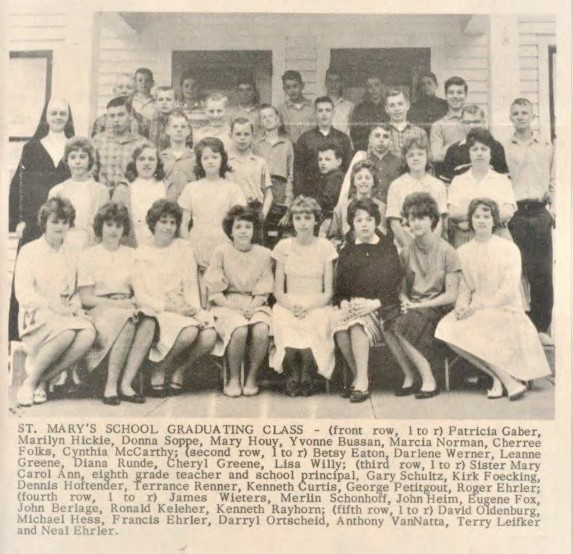
Figure 16. St. Mary's 8th grade graduation in 1963. Terry Renner is in the photo along with many others who have been active in the community. Galena Gazette, May 23, 1963.
Terry, who pursued a career in law enforcement, has now served three terms as mayor of Galena. While attending St. Mary's he remembers helping Andy Ganshirt (father of Ed Ganshirt, who became the primary school principal for the Galena school district before retiring) with his church janitorial duties (Phone interview 19 November 2020). Andy sometimes got Terry out of class early to help with the work. Other students would help the sisters with various tasks, like boxing up books to be available for students wishing to check them out. Some of the older girls would help the sisters with laundry and cooking duties.
Discipline was not a big problem. "You didn't mess around," Terry said. The teachers were firm but the worst physical punishment might be a tap on the back of the hand with a ruler. More serious was when the teacher had to call the parents, who would always back up the teacher. Punishment at home was likely to be far more serious.
Chuck Korte, retired Galena teacher and very successful football coach for the Galena Pirates, remembers the firm discipline as well. "You didn't question authority," he said "you really had to tow the line." (Phone interview 3 December 2020). Serious offenses might mean a trip to see the priest, a fate worse than death for some. Chuck also remembers having to raise your hand, waiting to be called upon, and then standing by your desk before answering. Chuck's mother was one of the lay teachers for the school.
Students had to wear uniforms, but this was only after the policy was adopted in 1960. The boys had dark blue pants and a lighter blue shirt. The girls had dark blue dresses and white shirts. Chuck also remembers recess vividly. Students always went outside, no matter what the weather. "Softball was the game of choice," he said, and sometimes a little basketball. But there was no football; that came in later years. Sometimes they would shoot a few baskets in the cramped quarters of St. Joseph's Hall but the court was upstairs and the ceiling was too low to make good shots. At other times they would use the facilities at St. Michael's (subsequently the Art and Recreation Center after the school closed), or Central (now Galena Green Condominiums).
Years earlier, Chuck's mother grew up in the country, and would hitch up a horse to the buggy, get the younger children loaded in and then on the way to St. Mary's, would pick up more kids needing a lift. Automobiles, however, meant ride-sharing on a larger scale. But after World War II, the public school buses (the bus company had been started by the Hillard family) picked up all students along their routes, whether they be going to St. Mary's, St. Michael's, or the public school.
Rick Weis was another faithful graduate (phone interview 9 December 2020). He worked his way up in the financial world, becoming Executive Vice President of the First National Bank of Galena. He was a key player in starting the First Community Bank of Galena back in 1995 and has been a
key part of it ever since. Rick, too, fondly remembers his grade school years at St. Mary's.
Living close by, it was an easy walk to school for Rick. He doesn't remember any harsh discipline, and students were well behaved.
Sometimes, when playing basketball and nearing the end of recess time, a student might "accidentally" let the ball go bounding down Hill Street and across Franklin. The time it took to round up the errant ball led to a longer recess.
Rick's father was the janitor; he took over from Andy Ganshirt, so Rick often helped him with his duties. All in all, it was a good experience, and like many others, Rick would like to see something positive come from saving the school building. Many would agree, hoping it can become a positive for the entire community, no matter what one's religion, education, or origins.
The Valente Years: 1978-2020
The years following the closure of St. Mary's school were sad ones for the old school building. The Parish was divided on what to do with it, but after a few years, it was decided to put it on the market. The buyer turned out to be Orlando Valente, an electrical contractor from Lisle, Illinois. Originally from northern Italy, he became intrigued by Galena and began looking for commercial properties on the market. Valente would ultimately buy the DeSoto House Hotel, St. Mary's School, the St. Louis Building and others, both in Galena and surrounding towns.
He purchased not only the school building and adjacent playground, but also three vacant tracts of land immediately to the south of Hill Street (Figure 18). This was in 1978 (Warranty Deed No. 152047; papers signed 11 Nov. 1978 but not recorded until 26 June 1979 when the three lots south of Hill St. were purchased). He determined to turn the school into small apartments, and provided the City Council with a nicely drawn set of architectural plans done by Oak Park Architects (Files in the City of Galena Building and Zoning Departments, dated 24 October 1985).
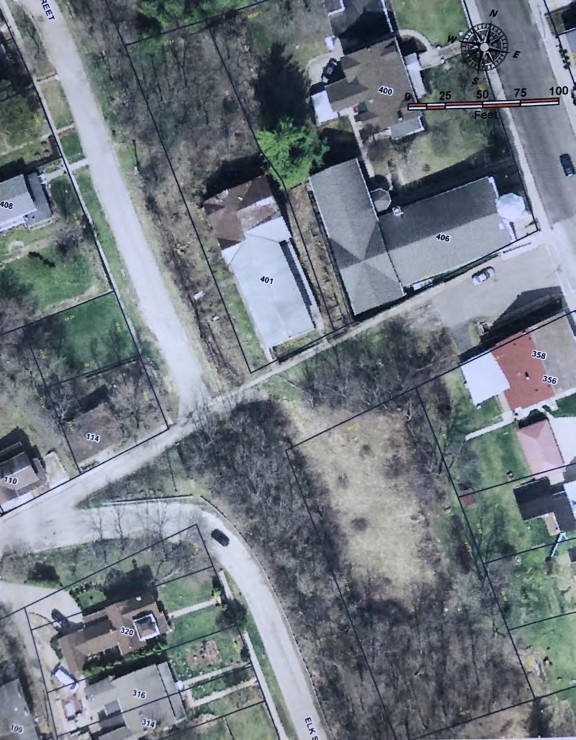
Figure 17. Air Photo of St. Mary's School neighborhood, circa 2010. Building 401 Elk Street is the school and 406 Franklin is the church. - City of Galena Zoning Department files.
But there were clear conflicts with the zoning ordinance and building codes relative to the number and size of the apartments, parking, and fire
department access. Nothing happened as Valente turned his attention to other properties--and as questions arose about questionable work proceeding without proper permits. He was also having financial difficulties.
On October 30th of 1989 Tract III of Valente's property south of and bordering Hill Street, was put up for sale for non-payment of taxes. A Richard Fell paid those taxes and in November of 1991 received a deed to the property (Tax Deed No. 212450). During all this time, the school building continued to deteriorate and neighbors were becoming increasingly restless. Fell, two years later, sold the same parcel back to Valente (Quit Claim Deed No. 229750). There may have been some logic in the transaction in that both the school and the undeveloped property south of High Street were needed to create an economically feasible project.
An agreement was formulated and signed between the City and Valente in July of 1993 when the Zoning Board approved a special use permit and a density variance for the property. It called for the City, upon execution of the agreement, to "immediately issue a special use permit for the use of the property at 201 N. High Street as a ten-unit multiple family dwelling or condominium" (Building and Zoning Department files, agreement dated 20 July 1993). The Special Use Permit was granted, but then revoked in July of 2005 because it had expired and the work had not been done (Memo to Mark Moran from Russ Kieffer, Zoning Administrator, 13 June 2011).
In May of 1995, Valente and his wife Ursula moved the three tracts south of Hill into the "Valente Family Trust" (Deed in Trust No. 238109). And a month later the trust granted ownership of most (if not all) of the Valente properties in Galena to Orlando Valente and Ursula Valente, as joint tenants (Trustee's Deed No. 238564). The school property would become the Elk and High Street Development Corp. with Orlando as manager.
After revocation of the Special Use Permit, things were at a standstill. The city also had a new zoning ordinance whose requirements would require addressing additional issues. After a number of years of back and forth conversations, the City laid out a number of specific issues that had to be resolved before any rezoning could proceed. In a letter dated 3 March 2006, Valente vented his frustrations to the zoning administrator (See Appendix B, "Zoning Analysis for St. Mary's Rehabilitation Development," Zoning Dept. files, 13 March 2006). He tried to respond point by point to the City's concerns but didn't always stay on track.
He accused the City of not being fair, and, in lieu of cooperation, engaging in "intensive negative advertising...to prevent any bank participation along with continued harassment by City officials." He then asked that the City not publicize any actions (including hearings) by the Zoning Board or Council until after he had obtained financing--to avoid negative publicity. At a previous city council meeting he did admit that many of the problems with the development proceeding were due to 12 years of bankruptcy proceedings and "the interference of the courts" (Minutes of the Regular Board Meeting of 25 July 2005). Meanwhile, the St. Mary's School building continued to deteriorate (Figures 19 and 20).
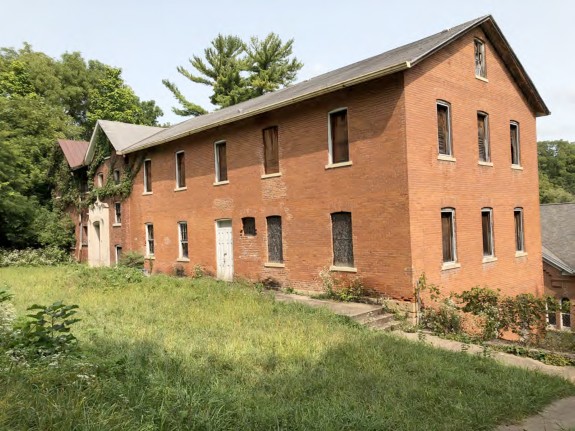
Figure 18. St. Mary's School today after years of failed redevelopment and renovation plans. Photo taken 14 September 2020.
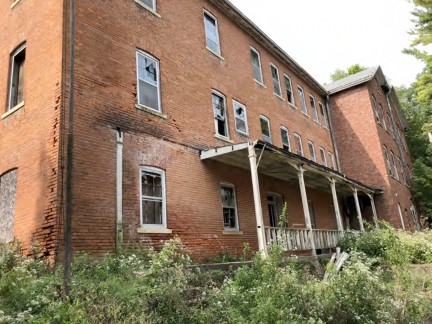
Figure 19. More years of neglect. St. Mary's School showing east facade with original 1864 section on the left. Photo taken 14 September 2020.
A short time later, Valente was able to enlist the services of local architect Adam Johnson, who after conversations with Valente and the City, presented a plan for the rezoning of the property to a Planned Unit Development (PUD). This approach would entail a different set of criteria and enhance the prospects of the project proceeding.
In November of 2006 the Zoning Board of Appeals approved a preliminary PUD plan which included 10 condominium units and 3 single family homes with associated parking areas and street improvements (Memo to Mark Moran from Russ Kieffer, Zoning Administrator, 13 June 2011). The City Council, however, denied the request for preliminary PUD approval.
Further discussion failed to resolve outstanding issues. There were other discussions and presentations, but nothing came of any of them.
St. Mary's school continued another period of decline. Windows, doors, and roof were (and still are) missing, broken or leaking (Figures 21 and 22). In 2019 the school made the Landmarks Illinois' "Most Endangered Historic Places in Illinois" list. They determined the building's historical and cultural associations were significant and went well beyond St. Mary's history, having value for the entire community.
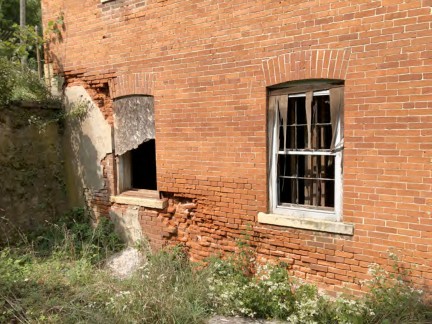
Figure 20. St. Mary's School showing deterioration of south (High St.) facade. Photo taken 14 September 2020.
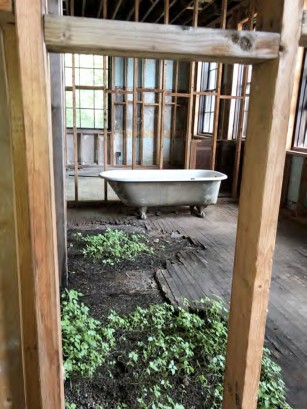
Figure 21. St. Mary's School today showing upper floor water damage from leaking roof. Also visible is the rough framing done throughout the building after all the lath, plaster and wood trim was unceremoniously removed. Perhaps the bathtub was left to catch leaking rainwater. Photo taken 14 September 2020.
Finally, in late 2020, Ursula Valente expressed an interest in donating the property involved to a non-profit, or even the city, in hopes that something good could come of it all. Due to ill health her husband was increasingly out of the picture. Those discussions are ongoing as this report is being written. But one thing is for certain; it seems that most want a viable redevelopment to proceed. They just don't agree on what form it should take. If there is one thing everyone is agreed on, however, it is that time is running out for St. Mary's School, a Galena landmark.
Acknowledgements
As part of an effort to publicize the plight of endangered historic properties in Galena, The Galena Foundation initiated an effort in 2019 to research the history and significance of several properties in danger of being lost. The first candidate was the McGovern-Delihant House located at 901 Fourth Street. For 2020 they authorized the research and writing of a complete report on the old Marine Hospital which was finished in December of that year. This report on St. Mary's School, is the third report. As with the first two, acknowledgements are due to the many people and organizations who helped with the effort.
In no particular order, many thanks must go to the Galena Public Library and their Historical Collections Room. Their materials are always critical to a report such as this, and they had a lot on the history of the St. Mary Parish and the School. Their dedicated local historians for this project included historical librarian Steve Repp, who helped whenever and wherever he could. Help was also received from volunteers Tim Doser and Craig Albaugh, who once again went out of their way to provide pertinent leads, newspaper clippings and photos of the School. Craig's continuing efforts in collecting digital copies of early Galena photos for the library proved very helpful. And Tim kept providing a stream of old newspaper articles and photographs to help the process along.
Karen Zehr and the Recorder's Office at the Jo Daviess County Courthouse must also be thanked. As usual, Karen made quick work of tracking down (or showing how to track down) deeds and property transactions over a 155 year period. The Galena-Jo Daviess County Historical Society was also very helpful, and special thanks go again to volunteer Chris Chapman, who helped search their excellent collections for information on the School. The Galena State Historic Sites Office was also very helpful, with Terry Miller and Jamie Loso happy to make their files and photos readily available.
And mention must be made of the help supplied by the School Sisters of Notre Dame in Milwaukee, WI who ran the St. Mary School for most of its life. Their archivist, Michele Levandoski, was most helpful with information in their files, especially school photos. Kevin Fuss, Director of Research and Planning of the Diocese of Rockford was also helpful.
And as usual, the City of Galena staff also offered valuable assistance, particularly Jonathan Miller and Matt Oldenburg with their voluminous building and zoning department files. I also want to thank three individuals who were graduates of St. Mary's School and graciously gave me their time to describe some of their impressions while students there. These were Terry Renner, Chuck Korte, and Rick Weis. I could have interviewed a hundred others, but I think these three gave good and well-rounded views of their experiences. Again, there were various other individuals, too numerous to mention, who helped with various leads and bits of information.
And special thanks to Galena Foundation Board member Beth Baranski who once again helped at various points along the way, most especially with the final phase of proofing, editing and printing.
And last but not least, a huge thanks to the Galena Foundation and all of its directors for believing in Galena and the value of each and every bit of its history and architecture.
Daryl Watson, Historical Researcher
Appendix A
St. Mary's School Class Photos
Courtesy School Sisters of Notre Dame Archives, Milwaukee, WI.
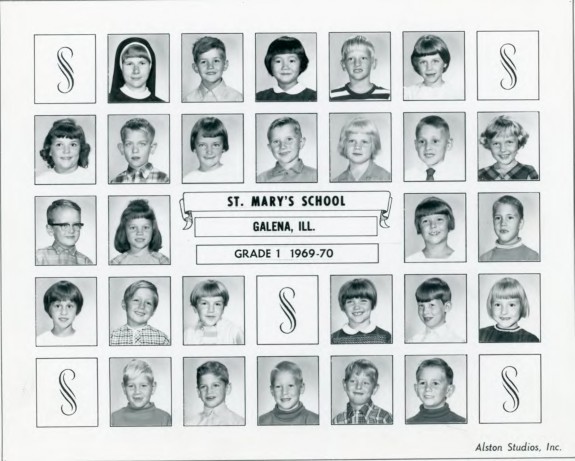
A1 - St. Mary School - Grade 1 - 1969-70
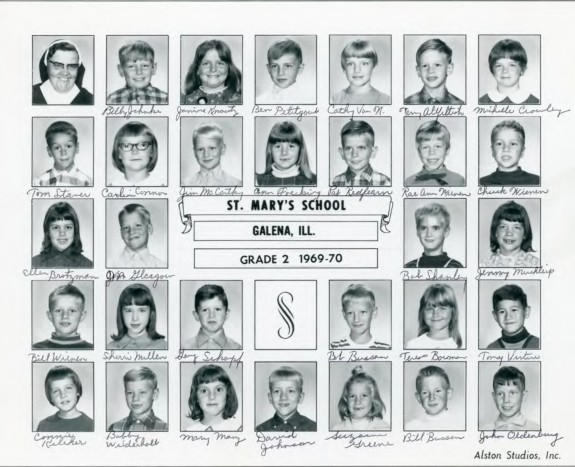
A2 - St. Mary School - Grade 2 - 1969-70
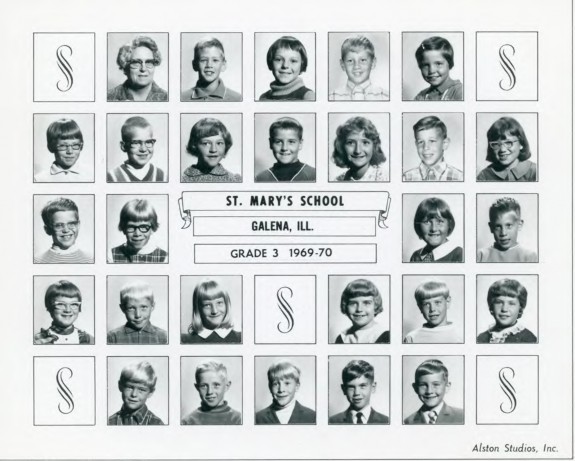
A3 - St. Mary School - Grade 3 - 1969-70
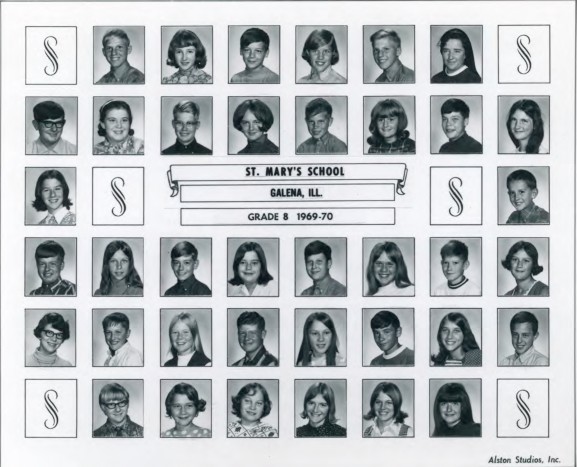
A4 - St. Mary School - Grade 8 - 1969-70
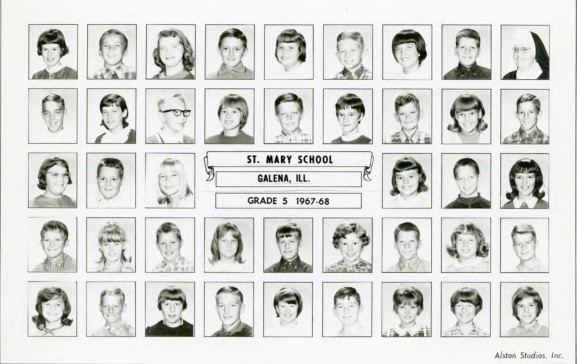
A5 - St. Mary School - Grade 5 - 1967-68
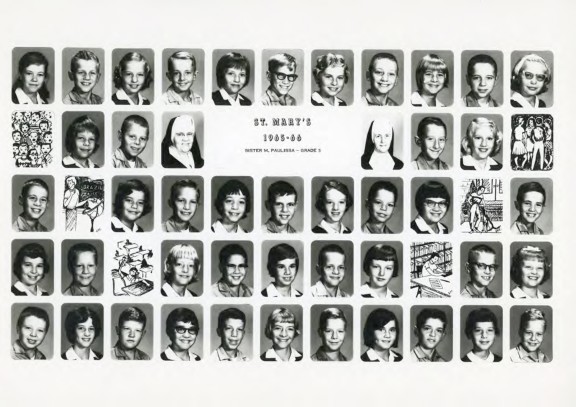
A6 - St. Mary School - Grade 5 - 1965-66
Appendix B
Letter to Zoning Administrator from Orlando Valente pp. 1-6 - (13 March 2006), Zoning Dept. Files.
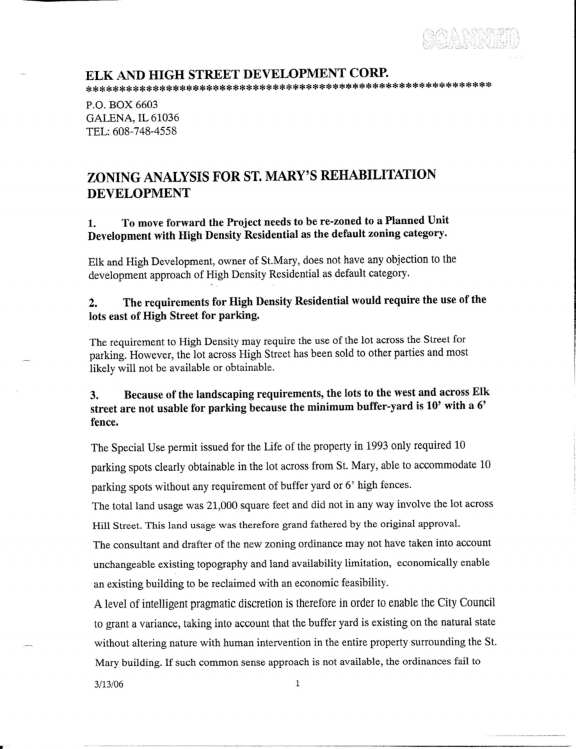
B1 - Letter to Zoning Administrator from Orlando Valente, p. 1 of 6 - (13 March 2006), Zoning Dept. Files.
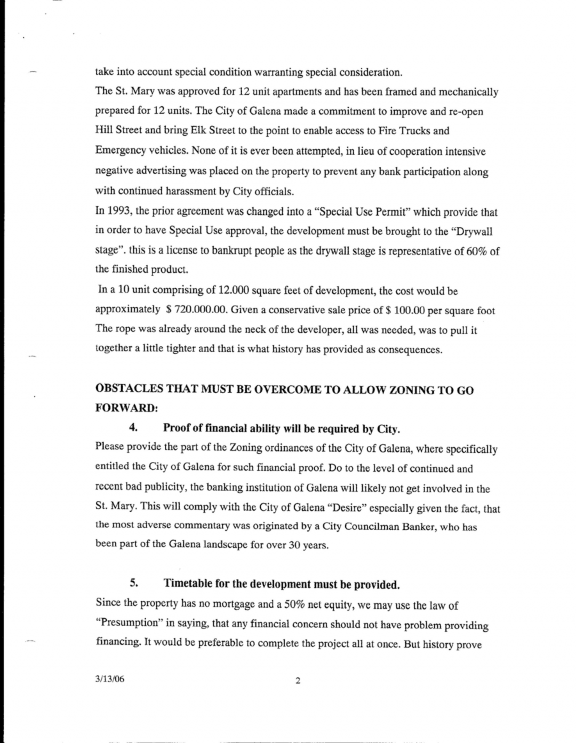
B2 - Letter to Zoning Administrator from Orlando Valente, p. 2 of 6 - (13 March 2006), Zoning Dept. Files.
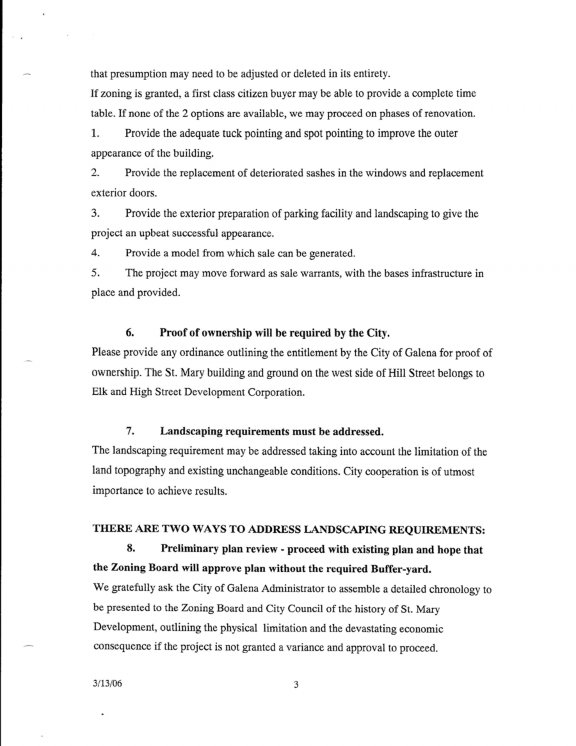
B3 - Letter to Zoning Administrator from Orlando Valente, p. 3 of 6 - (3 March 2006), Zoning Dept. Files.
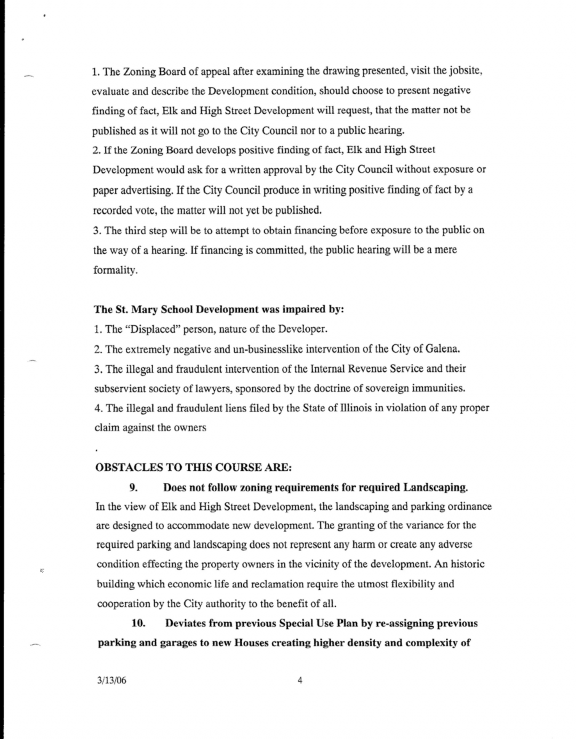
B4 - Letter to Zoning Administrator from Orlando Valente, p. 4 of 6 - (13 March 2006), Zoning Dept. Files.
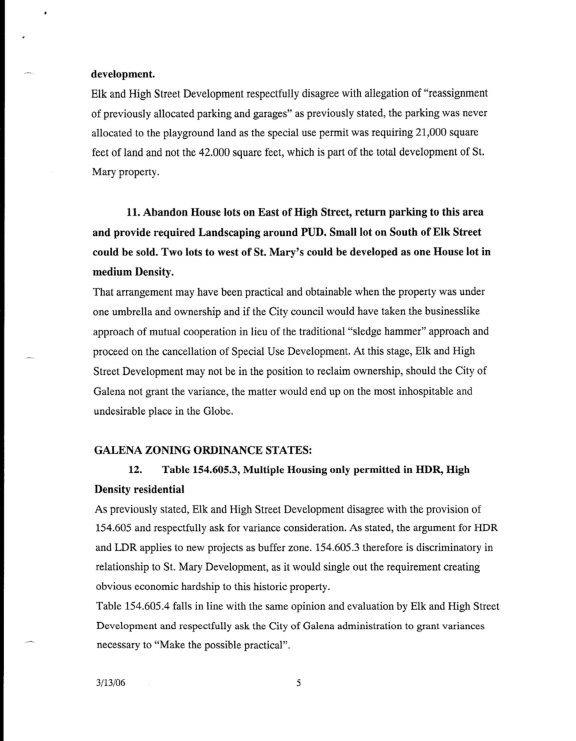
B5 - Letter to Zoning Administrator from Orlando Valente, p. 5 of 6 - (13 March 2006), Zoning Dept. Files.
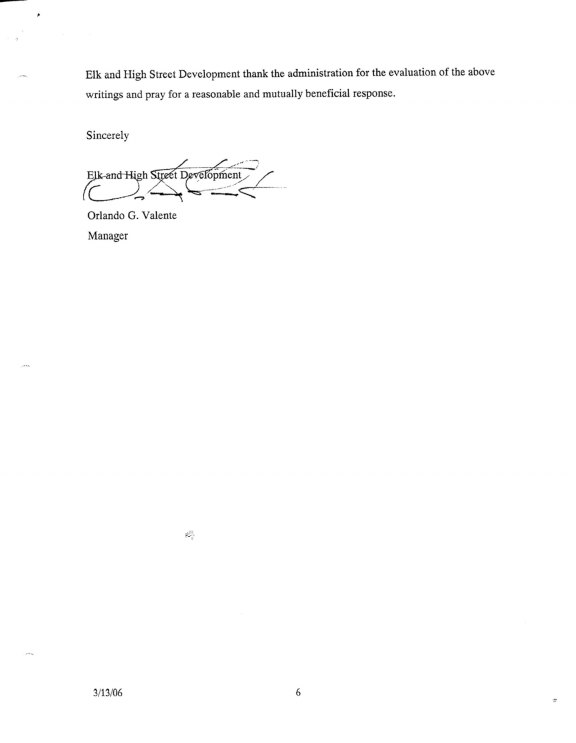
B6 - Letter to Zoning Administrator from Orlando Valente, p. 6 of 6 - (13 March 2006), Zoning Dept. Files.

